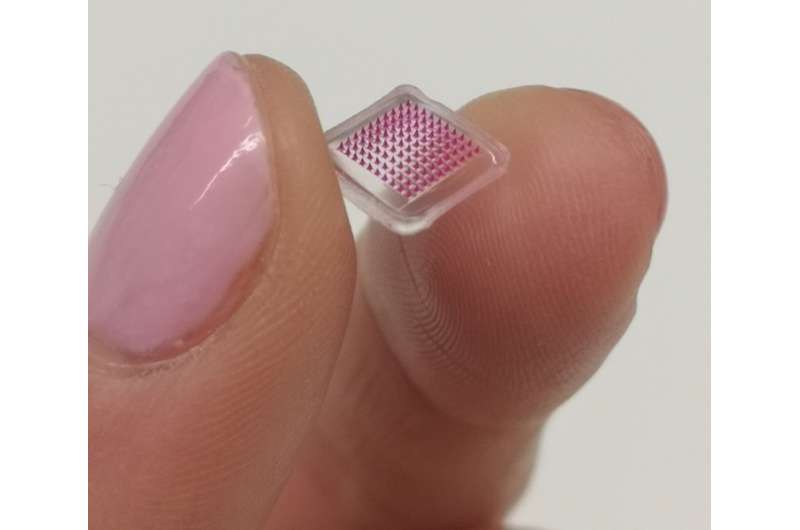
MRSA skin infections are often treated with intravenous injection of antibiotics, which can cause significant side effects and promote the development of resistant bacterial strains. To solve these problems, researchers at Karolinska Institutet in Sweden are developing a microneedle patch that delivers antibiotics directly into the affected skin area. New results published in Advanced Materials Technologies show that the microneedle patch effectively reduces MRSA bacteria in the skin.
MRSA (methicillin resistant Staphylococcus aureus) skin infections are potentially lethal, especially in patients with compromised immune systems. Vancomycin is one of the main treatments and is given as an intravenous injection. The reason the antibiotic is not given locally is because of its low ability to penetrate the skin. It is not given orally either because of poor absorption through the gut. The problem with systemic administration is that it often results in significant side effects. Moreover, even when relatively high doses are administered, the local concentration of vancomycin in the skin remains low, which may promote the development of antibiotic resistant strains. Thus, there is a clinical need for local delivery of vancomycin to the skin.
Miniaturized needles
“We have addressed this by using microneedle patches that consist of miniaturized needles made from a polymer that is loaded with the drug,” says Jill Ziesmer, Ph.D. student at the Department of Microbiology, Tumor and Cell Biology, Karolinska Institutet and first author of the study. “Through an innovative microneedle design we could efficiently control the drug amounts delivered into the skin.”
The patch is placed on the skin at the site of infection. The barely visible microneedles are so small that they do not reach the pain receptors, which makes the treatment relatively painless. The microneedles’ ability to penetrate the skin was studied in skin tissue from piglets and excised human skin. The results show that the drug was effectively delivered into the skin, and most importantly, significantly reduced the MRSA bacterial population.
New treatment for skin infections
“If this drug delivery device reaches the clinics, it has the capacity to transform the way skin infections from potentially lethal bacteria are treated with drastic improvements in the quality of life of patients,” says Georgios Sotiriou, principal researcher at the Department of Microbiology, Tumor and Cell Biology, Karolinska Institutet and last author of the study.
Source: Read Full Article